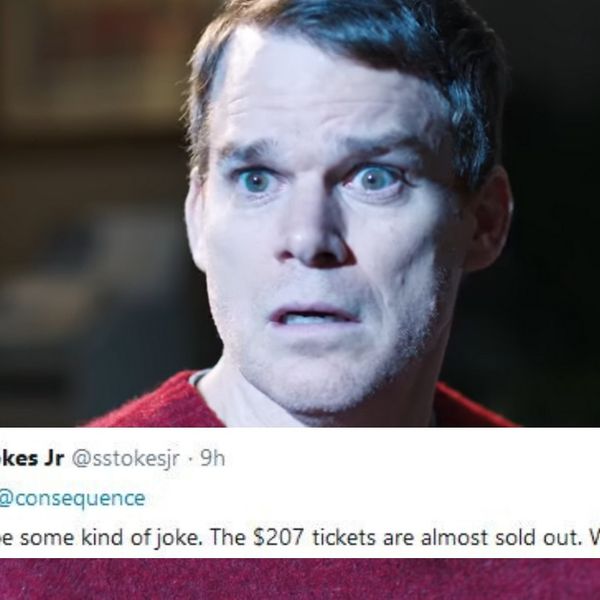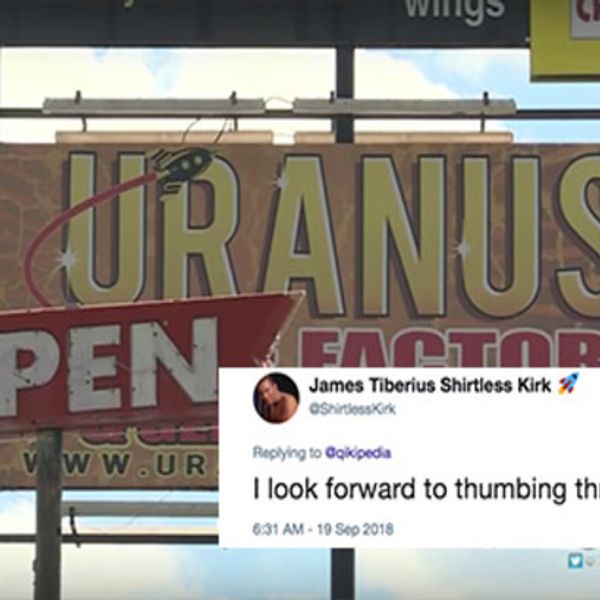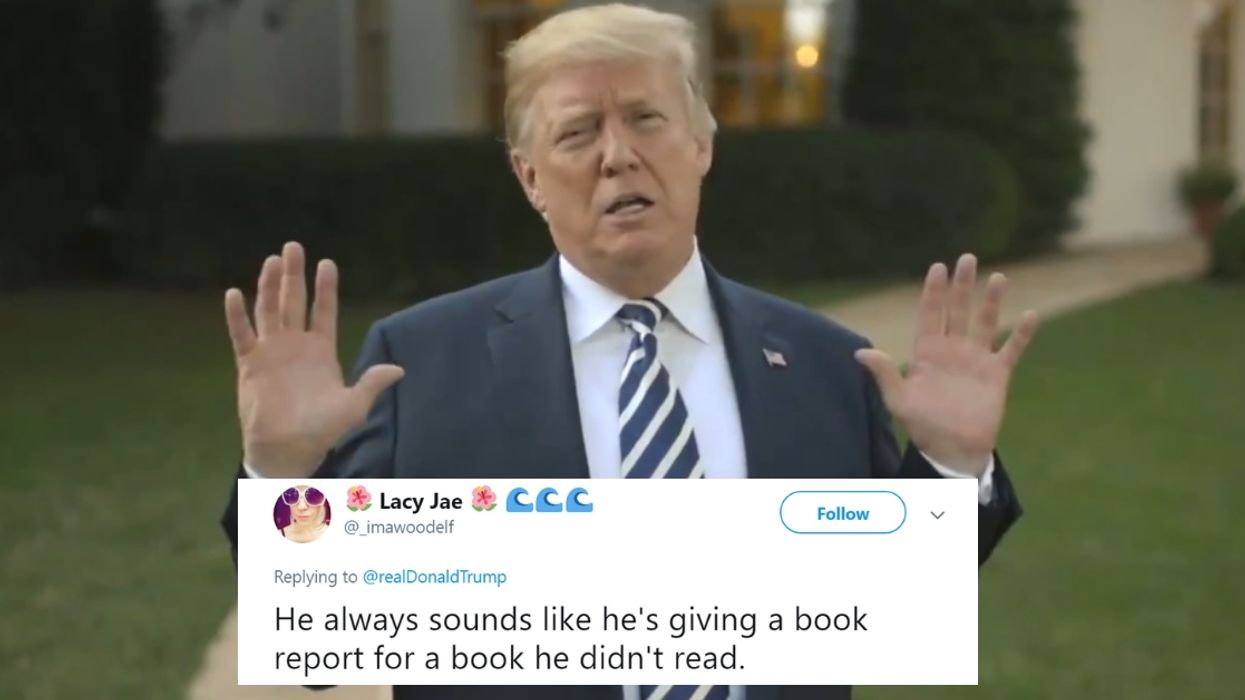December, 2003, LOS ANGELES -- It was sixty years ago that my family and I came to Arkansas. My father had told me that we were going on a "long vacation" to a far away place called Camp Rohwer. Together with some eight thousand other Japanese Americans, we arrived at a barbed wire enclosed campground of black tarpaper barracks. Soldiers with guns watched over us from high guard towers. Outside the barbed wire fence, thick, wooded swampland surrounded us. All we had was the luggage we carried. President Roosevelt had signed an executive order imprisoning Japanese Americans in 10 camps like this one simply because we happened to look like the enemy.
I had never gone back to Rohwer since we left. This was my first trip back to a place about which I actually have fond boyhood memories mingled with my understanding of the break down of American democracy under the stress of war. I remember the fun of catching pollywogs in the ditch and watching them turn into frogs. I also understand now the tears I saw well up so often in my mother's eyes at the sight of the barbed wire fence that symbolized her loss and confinement. I remember the joy of that wondrous winter morning when we woke up to find everything covered in white - my discovery of the magic of snow that first winter in Arkansas. And I cherish now so much more deeply my father's resilience, energy, and dignity under conditions of groundless injustice. I returned to Rohwer resolved that America must not forget the lessons of its history. I was coming back as the Chairman of the Japanese American National Museum working with the University of Arkansas at Little Rock to plan a series of exhibits next year on the internment camp history of Arkansas. I was returning to the place of my childhood memories to build a better future for our democracy.
 The Rohwer that I came back to, however, was not that of my memory. It was utterly changed. The swamp that I remembered had been drained completely. The trees of the dense forest that surrounded us had all been chopped down. Rohwer today was mile after mile of open farmland. The only reminder that there had once been an internment camp was the cemetery - the rows of markers of those who had died in imprisonment. The most prominent of the markers was a tall, crumbling concrete monument to the Japanese American young men who left the internment camp to fight for this country and had perished in the war. The irony was excruciating. Standing before that soldiers' monument in an American internment camp, sharp, painful tears welled up in my eyes. These incredible young men had fought and died to make my America today possible. I vowed then that the ideals of this nation, the civil liberty for which they so bravely fought, shall not be tarnished - not in my time, when the tensions of war are again challenging those ideals.
The Rohwer that I came back to, however, was not that of my memory. It was utterly changed. The swamp that I remembered had been drained completely. The trees of the dense forest that surrounded us had all been chopped down. Rohwer today was mile after mile of open farmland. The only reminder that there had once been an internment camp was the cemetery - the rows of markers of those who had died in imprisonment. The most prominent of the markers was a tall, crumbling concrete monument to the Japanese American young men who left the internment camp to fight for this country and had perished in the war. The irony was excruciating. Standing before that soldiers' monument in an American internment camp, sharp, painful tears welled up in my eyes. These incredible young men had fought and died to make my America today possible. I vowed then that the ideals of this nation, the civil liberty for which they so bravely fought, shall not be tarnished - not in my time, when the tensions of war are again challenging those ideals.
Funded by the Winthrop Rockefeller Foundation, the University of Arkansas at Little Rock and the Japanese American National Museum are planning a series of major events in Little Rock to coincide with the opening of our exhibits there in September 2004. One of them will be a bus trip back to Camp Rohwer. I will be there again. I hope many of you that live in the South - or, for that matter, anyone interested - might join us for that journey.
The much-vaunted southern hospitality certainly more than lived up to the legend while I was in Little Rock. I still savor the warmth and graciousness extended to me by so many people of Little Rock while I was there. A special treat was a hardhat tour of the construction of the President William Jefferson Clinton Library conducted by its President and CEO, Skip Rutherford. I was flattered to learn from him that a copy of "To The Stars," my autobiography that I'd sent to the White House because of our mutual Arkansas boyhoods, was to be a part of the preview exhibit of the Clinton Library. I will certainly look forward to the opening of the President Bill Clinton Library in November 2004.
 Two days after returning from Arkansas, I was before the camera playing a Japanese priest in two installments of the CBS soap opera, "The Young and The Restless." Neil and Drucilla of the series run off to Japan to get married. The character I play, Rev. Tanaka, officiates at their wedding. It reminded me of Gene Roddenberry and Majel Barrett's marriage in Japan. Gene and Majel were married in a full Shinto ceremony elegantly dressed in formal wedding kimono. In "The Young and The Restless," however, I was the only one in formal Japanese attire. When the dresser came into my dressing room to dress me properly, I understood why the other actors were not similarly dressed. There were layer upon layers of under kimono. Each layer of kimono had to be worn in a specific way and tied with a certain kind of knot. Not only was it complicated, the process of putting on the kimono was extremely time consuming. But, for me, it was great fun wearing the costume. As I walked about, the layers of silk rustled softly with each movement. I felt elegant and transported in time and culture. It was hard to believe that only a few days before, I had been laughing and joking, enjoying southern fried chicken with Arkansans. The two episodes of "The Young and The Restless" in which I appear will air on December 22 and 23. I hope you'll be able to catch me on the show.
Two days after returning from Arkansas, I was before the camera playing a Japanese priest in two installments of the CBS soap opera, "The Young and The Restless." Neil and Drucilla of the series run off to Japan to get married. The character I play, Rev. Tanaka, officiates at their wedding. It reminded me of Gene Roddenberry and Majel Barrett's marriage in Japan. Gene and Majel were married in a full Shinto ceremony elegantly dressed in formal wedding kimono. In "The Young and The Restless," however, I was the only one in formal Japanese attire. When the dresser came into my dressing room to dress me properly, I understood why the other actors were not similarly dressed. There were layer upon layers of under kimono. Each layer of kimono had to be worn in a specific way and tied with a certain kind of knot. Not only was it complicated, the process of putting on the kimono was extremely time consuming. But, for me, it was great fun wearing the costume. As I walked about, the layers of silk rustled softly with each movement. I felt elegant and transported in time and culture. It was hard to believe that only a few days before, I had been laughing and joking, enjoying southern fried chicken with Arkansans. The two episodes of "The Young and The Restless" in which I appear will air on December 22 and 23. I hope you'll be able to catch me on the show.
Immediately upon finished the soap opera, I was on a plane again to appear at a Star Trek convention in El Paso, Texas. I was once again back in the south - but the rhythm of the accent this trip had a different sound. That's what I love about regionalisms. They come in such wonderfully varied flavors - drawls, brogues, burrs, and that unmistakable Texan twang. Accents make language so savory.
This convention brought the four of us from the show, Nichelle Nichols, Walter Koenig, Jimmy Doohan, and me, together again. I hadn't seen Jimmy in ages and it was wonderful to be with him once again. He had lost a lot of weight since his illness and had slowed down considerably but that bullheaded spirit of his was unchanged. The El Paso convention is one that we will all fondly remember seeing lovably irascible Jimmy back in action. It's hard to believe but Christmas decorations are starting to appear everywhere. December is already upon us. So, as we all start making lists and preparing holiday greeting cards, I extend to all of you, my heartiest holiday cheers. May the New Year bring us all health, wealth, and peace.
Scientists Have Developed A New 'Planetary Health Diet' That Could Literally Save Lives And The Planet At The Same Time

In an attempt to help curb worldwide issues such as climate change, and malnutrition in poverty stricken areas, a joint commission by EAT, a non-profit seeking to transform the global food system, and The Lancet, an old and respected medical journal, has released a recommended guideline for dietary and planetary health.
The report recommends cutting back meat consumption to at most, a burger patty or equivalent a week, and supplementing your protein intake with nuts, legumes, and beans. An increase in veggies and fruits would make up the bulk of your meal plate.
The dietary guideline was established by a coalition of over 30 scientists, researchers, and doctors designed not just with human nutrition in mind, but also sustainability. With estimations that the planet will reach 10 billion people by 2050, scientists are working to figure out how to feed them all.
Additionally, the red meat industry has for a long time, been known to be a contributor to greenhouse gasses, while land conversion for food production is the greatest factor in biodiversity loss. The report from the EAT-Lance commission estimates that through nutrition and agricultural changes from this diet, we can save 11 million lives every year.
That sounds pretty great.
The EAT-Lancet commission lists very specific macronutrient ranges for their proposed diet, from 300g of veggies per day, to only 7g for red meats. However, it's this specificity that is drawing criticism.
John Ioannidis, the chair of disease prevention at Stanford university has praised the growing attention to how diets can affect the environment, but states the commission doesn't represent the scientific uncertainty between health and nutrition.
Dr. Georgia Ede, who writes for the site Diagnosis: Diet, took issue with the report's specific recommendations. Dr. Ede's website makes the case for low carb and paleolithic diets.
She points out the commission says,
"We have a high level of scientific certainty about the overall direction and magnitude of associations described in this Commission, although considerable uncertainty exists around detailed quantifications."
And yet, they recommend 0 to 58g per day of poultry, with a 29g midpoint. This seems very specific.
People are not willing to give up meat so easily.
Still, the report is a good starting point for the discussion we need to have about food's connection to not just our health, but the planet's well-being.
As Dr. Howard Frumklin, head of the Wellcome Trust which helped found the EAT foundation says himself,
"The links among diet, health and the environment are well-documented, but, until now, the challenge of attaining healthy diets from a sustainable food system has been hampered by a lack of science-based guidelines.
"While this report does not have all the answers, it provides governments, producers and individuals with an evidence-based starting point to work together to transform our food systems and cultures."
What should be a discussion is turning into an argument.
If we're going to be able to feed everyone, ensure their diet is nutritionally balanced, and try to curb climate change, it's important that people start talking about the positives and negatives of their current diet. The report provides a sense of context to which people can compare and share their ideas and study.
'Captain Marvel' May Have Just Introduced A New Black Female Superhero Right Under Our Noses

Warning: Minor spoilers ahead.
Nothing is a coincidence in the complex Marvel Cinematic Universe.
Now that Marvel Studios and Disney finally gave a female superhero her own movie, we realize Captain Marvel may have introduced a young character who takes on a more significant role in the future of the MCU.
The '90s-set origin story is led by the dual personalities of Carol Danvers — a U.S. Air Force pilot; and Vers, a Kree from the planet Hala in another life — and becomes Captain Marvel, expertly played by Brie Larson.
Without sounding too cryptic, Captain Marvel is the sum of Carol and Vers, and the complex narrative revolves around Vers finding out about her past.
Captain Marvel introduces us to a varied ensemble of personalities, including a young Nick Fury, played by Samuel L. Jackson, with whom she teams to fight off shape-shifting aliens called skrulls.
Instead of relying on a male love interest, Danvers has a best friend in Maria Rambeau, played by Lashana Lynch, giving the genre a refreshing feminist twist on the buddy action flick.
But it's Maria Rambeau's daughter Monica (Akira Akbar) who is making ardent fans giddy with anticipation about the character's future.
the future is beautiful and your name is monica rambeau https://t.co/HtNuXrWaZL— captain carol ︽✵︽ (@captain carol ︽✵︽) 1551819911.0
The precocious 11-year-old is, for all intents and purposes, just an adorable, "normal" kid who has ambitions of flying in the Air Force to emulate "Auntie Carol."
Monica's bravery belies her age as she encourages her mother to flee into space at the risk of never seeing her again for a mission involving the skrulls.
But there is more to her intelligence and inherent altruism, and those familiar with the comics are aware of her exciting destiny.
Refinery 29 revealed that the adult Monica Rambeau is just another iteration of Captain Marvel, and she is expected to come into prominence during the supposed 24-year time gap between Captain Marvel and Avengers: Endgame.
T'Challa is in the MCU Carol Danvers is in the MCU Monica Rambeau is in the MCU Y'all we are so close! https://t.co/rilnRAoErT— Raymond X (@Raymond X) 1552076618.0
Monica's origin story includes being a lieutenant in the New Orleans harbor patrol who comes into contact with "extra-dimensional energy" while preventing the creation of a powerful weapon.
As a result, she is able to manipulate, absorb and create energy.
Give Monica Rambeau her things!!!!— Ira Madison III (@Ira Madison III) 1552331197.0
According to the Hollywood Reporter, Monica is the second of six characters to take on the name of Captain Marvel and becomes the leader of the Avengers. She eventually adopts the codenames: Photon, Pulsar and in 2013, Spectrum.
✴️ monica rambeau: captain marvel | photon | pulsar | spectrum reading guide ✴️ https://t.co/etPruwZfbA— val saw captain marvel (@val saw captain marvel) 1552160876.0
The multifarious identities are complex for the uninitiated, for sure.
This might help:
In #captainMarvel they introduce the daughter of Monica Rambeau. Her name is also Monica Rambeau. In 2019 she would… https://t.co/MZMR6Cjcqm— Marc Dirix (@Marc Dirix) 1552071449.0
Fans are keeping their fingers crossed in the hopes that we'll be seeing the black female superhero's destiny realized.
Is anyone hoping that little Monica Rambeau is all grown up and busts into Avengers headquarters to show up the Sci… https://t.co/T56AX95nOC— Liz Nicole (@Liz Nicole) 1552015405.0
I know they didn’t give me all those heroic closeups of baby Monica for no reason. @ Marvel GIVE US MONICA RAMBEAU https://t.co/ECp8TlrPpQ— Eartha Snit (@Eartha Snit) 1552011810.0
Monica Rambeau and all of her code names getting ready for the next phase of the MCU https://t.co/o87qOdsoBo— Child of Hazel and Smoke (@Child of Hazel and Smoke) 1552257376.0
fun fact: maria’s daughter monica rambeau actually becomes captain marvel in the future and becomes the leader of t… https://t.co/pzzVyfHMf7— natasha ☾ | SAW CAPTAIN MARVEL !!! (@natasha ☾ | SAW CAPTAIN MARVEL !!!) 1552208712.0
The #CaptainMarvel trailer didn't do a good job. With this piece, I wanted to be clear that this film is for Black… https://t.co/3hckZUDltH— Jaleesa Lashay Diaz (@Jaleesa Lashay Diaz) 1552069934.0
I want a sequel yesterday. I just don’t know where they will have it. Will it take place in the past? (So much more… https://t.co/taq2pR4NyN— RoboFan (@RoboFan) 1552018976.0
@MarvelStudios Monica Rambeau! #CaptainMarvel I can't wait for her to get her powers! https://t.co/CCQ9P3iFFV— Jason (Captain Marvel did THAT) (@Jason (Captain Marvel did THAT)) 1551802986.0
I also freaked when Maria finally called her daughter Monica and I was like THERE SHE IS, MY GIRL, MY STAR MONICA RAMBEAU— Becca 💛 ECCC Q8 (@Becca 💛 ECCC Q8) 1552063569.0
As we've seen in Black Panther, the emergence of more black female superheroes is encouraging, and the seed planted with Monica Rambeau in Captain Marvel augurs a bright and exciting future for the MCU.
People Are Roasting Trump Over His Mind-Numbing Observation About The Wetness Of Water 😂
Donald Trump thanked the first responders who came to the aid of victims of Hurricane Florence. The storm devastated portions of North Carolina, dumping massive amounts of rain and damaging millions of dollars in property. Many natural areas were destroyed, some farmers lost everything and more than a few people have been left homeless. The first responders after this massive storm were literal life savers, and Trump was absolutely right to thank them. Unfortunately, the sentiment of his message was lost for many people because he didn't seem to put any effort or preparation into what he was saying. Then, in the middle of his off-the-cuff message, he confused everyone by talking about the wetness of water.
As Trump described the storm and the importance of first responders he told the world:
This is a tough hurricane, one of the wettest we've ever seen from the standpoint of water. Rarely have we had an experience like it and it certainly is not good.
The Tweet went out in the middle of the day on Tuesday, September 18th. At the time of this article, it hasn't even been up for 24 hours and already has over 13,000 comments. Many of them pointed out how Trump didn't even seem to try...
and how asinine his description was.
We don't know if Trump will continue to address the public by releasing these kinds of videos, or if they will continue to be as unrehearsed as this one is. We assure you, if they are, Twitter will have plenty to say about it.
H/T: Huffington Post, Twitter
The Kids From 'Stranger Things' Wrapped Presents For Superfans—And Did A Delightfully Terrible Job 😂
When it comes to giving gifts, not all celebrities are as crafty as Taylor Swift, but that didn't stop the adorable stars of Netflix's Stranger Things from giving it a try.
In a recently released video from Netflix, actors Millie, Finn, Noah, Caleb, Gaten, and Sadie got together for some holiday cheer and to wrap gifts for fans. But kids will be kids, even if they star in a hit television show. Watch as chaos ensues.
Fans loved every moment, even if the kids weren't the greatest wrappers.
@Stranger_Things I love seeing them mess around with each other.— Abby! (@Abby!) 1545318707.0
@doublejoywilson https://t.co/qgFgkZpTxQ— Stranger Things (@Stranger Things) 1545318849.0
@realrevella https://t.co/G5Er8pydg5— Stranger Things (@Stranger Things) 1545318801.0
@themallratss we do what we can https://t.co/POBMVbXfZS— Stranger Things (@Stranger Things) 1545319099.0
@Stranger_Things They’re a cute mess 😂— Janet ⁷✜🪐 (@Janet ⁷✜🪐) 1545318854.0
@minseokjin94 https://t.co/Dr4Y4xFYyM— Stranger Things (@Stranger Things) 1545318939.0
@Stranger_Things Thanks for the gif...they’re a MESS mess https://t.co/cG5ODdPDf0— Janet ⁷✜🪐 (@Janet ⁷✜🪐) 1545319571.0
@pvladins AH THE SOUND OF HOLIDAY CHEER— Stranger Things (@Stranger Things) 1545318737.0
@Stranger_Things HAPPY HOLYDAYS TO THE DEMOGORGON https://t.co/BpB1ZixUK5— 𝑣𝑎𝑙 ⚯͛ (@𝑣𝑎𝑙 ⚯͛) 1545318680.0
@edwardistheman @netflix ok here https://t.co/UwOLIa1T1C— Stranger Things (@Stranger Things) 1545318880.0
We just can't get enough of these talented kids!















